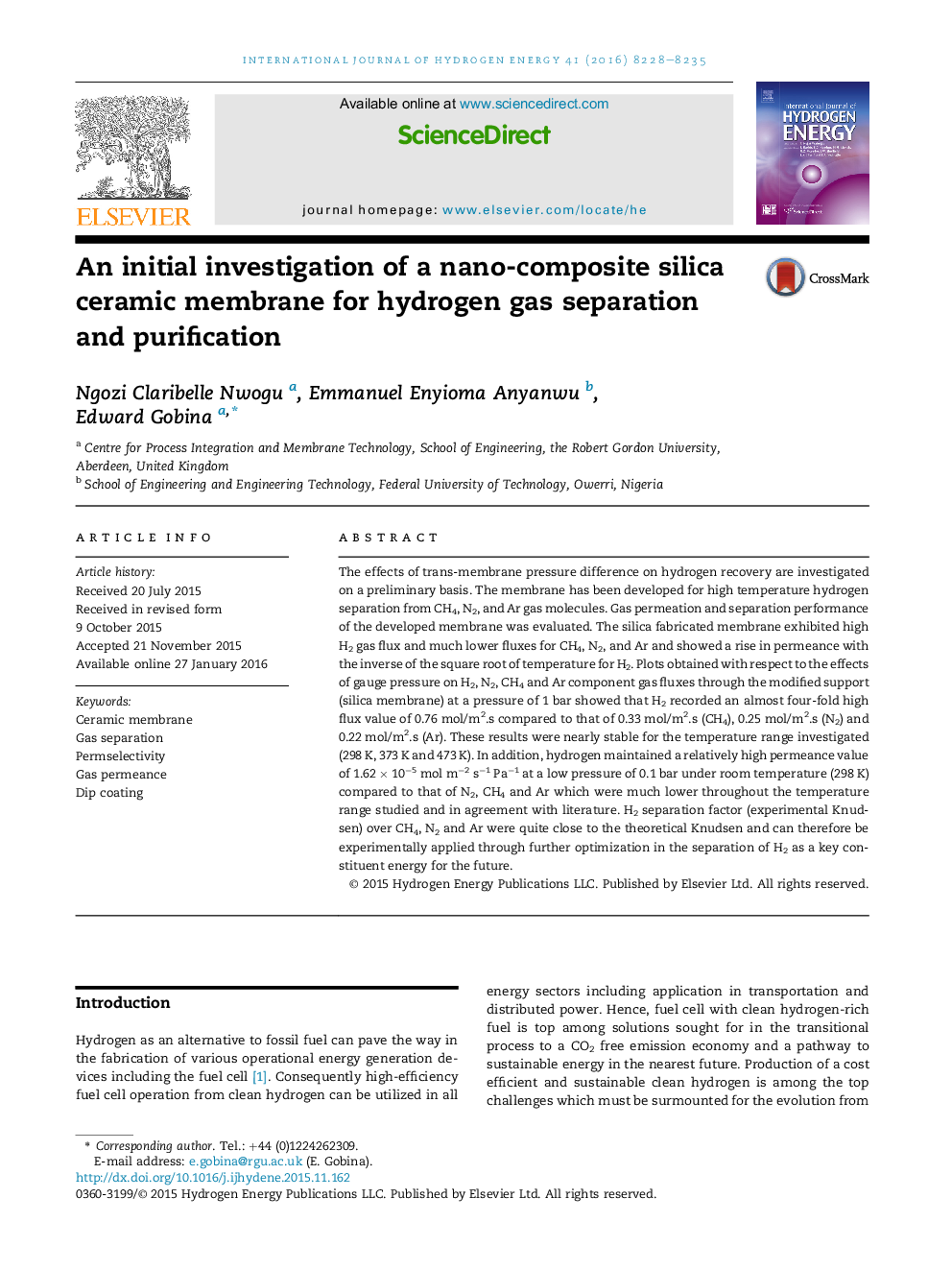| Article ID | Journal | Published Year | Pages | File Type |
|---|---|---|---|---|
| 1277318 | International Journal of Hydrogen Energy | 2016 | 8 Pages |
•We fabricated a nano-composite silica membrane for hydrogen separation through dip-coating.•We investigated the permeation characteristic of H2, CH4, N2 and Ar gas molecules.•The silica fabricated membrane exhibited high H2 gas flux and much lower fluxes for CH4, N2, and Ar.•The inverse of the square root of temperature increases gas permeance with H2 recording the highest permeance.•The mechanism in the flow is molecular weight dependent and typical of Knudsen transport mechanism.
The effects of trans-membrane pressure difference on hydrogen recovery are investigated on a preliminary basis. The membrane has been developed for high temperature hydrogen separation from CH4, N2, and Ar gas molecules. Gas permeation and separation performance of the developed membrane was evaluated. The silica fabricated membrane exhibited high H2 gas flux and much lower fluxes for CH4, N2, and Ar and showed a rise in permeance with the inverse of the square root of temperature for H2. Plots obtained with respect to the effects of gauge pressure on H2, N2, CH4 and Ar component gas fluxes through the modified support (silica membrane) at a pressure of 1 bar showed that H2 recorded an almost four-fold high flux value of 0.76 mol/m2.s compared to that of 0.33 mol/m2.s (CH4), 0.25 mol/m2.s (N2) and 0.22 mol/m2.s (Ar). These results were nearly stable for the temperature range investigated (298 K, 373 K and 473 K). In addition, hydrogen maintained a relatively high permeance value of 1.62 × 10−5 mol m−2 s−1 Pa−1 at a low pressure of 0.1 bar under room temperature (298 K) compared to that of N2, CH4 and Ar which were much lower throughout the temperature range studied and in agreement with literature. H2 separation factor (experimental Knudsen) over CH4, N2 and Ar were quite close to the theoretical Knudsen and can therefore be experimentally applied through further optimization in the separation of H2 as a key constituent energy for the future.
